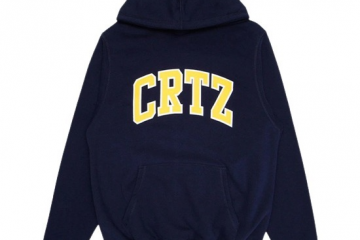When selecting materials for industrial, commercial, or even residential applications, EPDM rubber sheets often come up as a reliable solution. Ethylene Propylene Diene Monomer (EPDM) is a synthetic rubber known for its excellent resistance to weathering, ozone, UV rays, and extreme temperatures. However, not all EPDM sheets are created equal.
Choosing the right EPDM rubber sheet requires more than just picking the first one that shows up in your search. It involves understanding your specific requirements and knowing what qualities truly define a premium EPDM sheet. Below, we explore the five key features you should look for when choosing an EPDM rubber sheet to ensure it performs well in your intended application and offers long-term value.
1. Weather and UV Resistance
One of the most celebrated qualities of EPDM rubber is its outstanding resistance to environmental conditions. But here’s where quality plays a role. Not all EPDM sheets provide the same level of durability against weather elements.
A high-quality EPDM sheet will:
- Withstand prolonged exposure to sunlight without cracking or degrading.
- Maintain elasticity and strength even in extreme temperature conditions, ranging from -40°C to 120°C or more.
- Show resistance to ozone and oxidation, which are common causes of material breakdown in outdoor applications.
This feature makes EPDM rubber ideal for use in roofing membranes, seals, gaskets, pond liners, and automotive weatherstripping. If you’re planning to use the sheet outdoors or in areas with frequent exposure to sunlight and rain, ensure it is specifically formulated for UV and ozone resistance. Some lower-grade rubbers may claim to be EPDM but fail to meet the same level of resilience under real-world conditions.
2. Thermal and Chemical Stability
EPDM rubber performs exceptionally well across a wide range of temperatures. This makes it suitable for both hot and cold environments. Whether you’re sealing a hot pipe or installing a gasket in a freezing warehouse, EPDM remains flexible and functional.
Moreover, a quality EPDM sheet will resist a wide variety of chemicals, including:
- Diluted acids and alkalis
- Ketones and alcohols
- Brake fluids and water-based chemicals
However, it’s worth noting that EPDM is not compatible with oils, hydrocarbons,or petroleum-based products. If your application involves any such substances, you may want to consider alternatives like Nitrile (NBR) rubber.
So, when you’re reviewing options, always check the temperature rating and chemical resistance chart of the product. The better the sheet holds up against thermal and chemical exposure, the longer it will serve its purpose without deforming or breaking down.
3. Tensile Strength and Elasticity
Durability often boils down to how much stress a material can handle. In the case of rubber sheets, two metrics are crucial: tensile strength and elongation at break. Tensile strength refers to how much force the rubber can endure before breaking, while elongation tells you how much it can stretch.
For most applications, an EPDM sheet with:
- A tensile strength of at least 7 MPa (megapascals)
- Elongation at break of 250% or more
…offers a good balance of strength and flexibility. A premium sheet will resist tearing even when installed under stress or exposed to vibration and movement.
This property is particularly important in applications where the rubber must seal joints, cushion vibrations, or flex repeatedly. For example, in HVAC systems or heavy machinery, rubber that can stretch and return to its shape repeatedly is vital.
Ask your supplier or check the product specification sheet for these numbers. Sometimes, a cheaper option may have low tensile strength, making it unsuitable for high-performance tasks.
4. Thickness and Density Consistency
One of the more overlooked features, yet one that defines quality, is uniformity. A good EPDM rubber sheet should have consistent thickness and density across the entire surface. Any variation could lead to weak spots, improper sealing, or reduced load-bearing capacity.
Consistent thickness ensures:
- Even pressure distribution in sealing applications
- Uniform insulation in roofing or soundproofing setups
- No air or fluid leakage due to thin or worn-out sections
When purchasing, inspect the sheet physically (if possible) or look for certification or tolerance levels provided by the manufacturer. Ideally, the thickness variation should be within ±10% of the stated measurement.
A reliable supplier will usually follow ISO 3302-1 standards for rubber sheet tolerances and provide a technical data sheet that confirms material specifications, tolerances, and manufacturing standards.
5. Certifications and Compliance
Finally, any high-grade EPDM rubber sheet should come with credible certifications that demonstrate its performance and safety standards. Especially in industries like food processing, pharmaceuticals, or potable water systems, certifications aren’t just a bonus, they’re mandatory.
Look for certifications such as:
- RoHS (Restriction of Hazardous Substances)
- REACH (Registration, Evaluation, Authorisation and Restriction of Chemicals)
- FDA approval for food-grade applications
- WRAS certification for contact with drinking water
- ISO 9001 or 14001 for quality and environmental management
Certified materials not only ensure safety and performance but also reduce the risk of regulatory issues in professional or public installations.
Moreover, dealing with a certified manufacturer adds credibility and assures you that the rubber has gone through rigorous testing. It also helps with traceability and quality assurance in case of future replacements or warranty claims.
Final Thoughts
An EPDM rubber sheet may seem like a basic material, but choosing the right one can have a significant impact on the efficiency, safety, and longevity of your project. Whether you’re using it for sealing, insulation, weatherproofing, or lining, investing in a quality product means fewer failures, less maintenance, and better overall results.
To recap, the five key features to look for in a quality EPDM rubber sheet are:
- Strong resistance to weather, ozone, and UV radiation
- Excellent thermal and chemical stability
- High tensile strength and elasticity
- Uniform thickness and material density
- Verified certifications and industry compliance
It’s easy to be tempted by lower-priced options, especially when dealing with bulk materials. However, always remember that performance in the field outweighs any short-term cost savings. By focusing on these critical features, you’re not just buying a rubber sheet, you’re investing in reliability.
So, before making a purchase, take a moment to evaluate the product beyond its label. Check the specifications, request samples if needed, and choose a supplier who is transparent about their product quality and testing standards. This diligence will pay off in the form of long-lasting, dependable performance that you can count on.
SantopSeal uses a Thermoplastic rubber Santoprene TPE/TPV material to create custom profile extrusions of various shape and size of Seals & Gaskets as a solution to all your sealing needs. Using Thermoplastic elastomer Santoprene™, we supply major industries with a wide variety of inexpensive and customizable options. We offer various Tpe Pipe Santoprene tubing including Food grade, Thermoplastic Tubing, and general grade tubing, Extruded Seals and Gaskets, Extruded EPDM Sponge Rubber Seal, Standard & Flange Gaskets, and Digital knife cutting services. Contact us today via web, email, or phone and someone from our engineering or support team will be happy to answer any of your questions.



